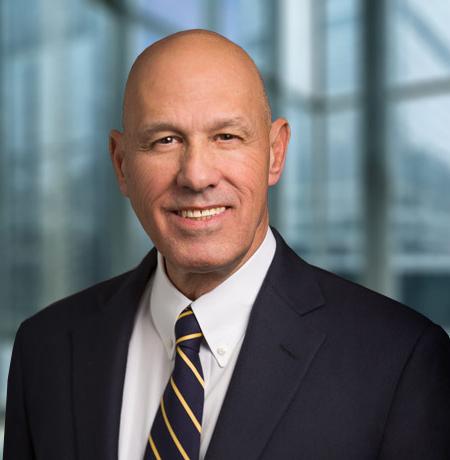
“Companies never choose to die, and yet many by not evolving are enabling that kind of fate.”
That was the message this month from Jim Hackett, new CEO of Ford, to investors nervous that the company was moving too slowly into the future of mobility—a future expected to be dominated by electric vehicles, self-driving vehicles, and new attitudes toward vehicle ownership.
Ford had been changing. Alan Mulally, Ford’s CEO from 2006 to 2014, engineered a turnaround after the nation’s financial crisis by scrubbing Ford’s portfolio of brands, reducing the number of plants, and cutting staff. Ford’s next CEO, Mark Fields, created the Ford Smart Mobility subsidiary to develop the software and tech services needed for self-driving cars, and pledged that Ford would mass-market a self-driving car for ride-sharing by 2021.
Ford may have been changing, but by the measure of the Internet economy, Ford wasn’t changing fast enough. “The world’s impression of Ford is that they are behind on a lot of these technologies,” said one analyst, an attitude reflected in a 40 percent drop in Ford’s stock price since 2014. In his May announcement that Fields would be replaced, Ford Chairman William C. Ford said, “Look at the pace of change and the competitors coming into our space, and we need to match or beat that.” The competitors he had in mind were not other traditional automakers—although they, too, are investing in self-driving and electric cars—but companies like Tesla, Google, Apple, and Uber.
The CEO’s Job in the Internet Economy
Hackett’s message applies to companies in any industry facing disruption by the Internet economy. Blockbuster didn’t choose to die, but it didn’t move aggressively enough to avoid the tsunami of streaming video. Borders didn’t choose to die, but it didn’t move aggressively enough into online fulfillment and e-books.
In hindsight, those conclusions are clear. However, in the Internet economy, the challenge for virtually any company is to prepare for a future that lacks the clarity offered by hindsight.
A disruptive future looms large in healthcare. UnitedHealth, number 6 on the Fortune 500, is rapidly growing its urgent care, surgery center, and analytics presence through the Optum subsidiary. CVS, number 7 on the Fortune 500, offers routine primary care, is moving into chronic care, and has a MinuteClinic within 10 miles of home for half of all Americans. And recently we learned that Apple, number 3 on the Fortune 500 and with a market cap of $800 billion, was in negotiations to buy a medical-clinic network. At the same time, emerging technology like telehealth, precision medicine, and artificial intelligence all hold the promise to fundamentally shift the economics and delivery of healthcare.
Hackett’s challenge at Ford is basically the same challenge faced by healthcare executives across the country: to envision the future, identify the organization’s new role, and move aggressively to organize and execute around that vision.
Envision the Future
In an environment in which the iPhone changed the world in 10 years, envisioning the future requires imagination and vigilant attention to new technology, business dynamics, and consumer preferences.
Five years ago, it would have been hard to predict that the market valuation of an electric car maker, Tesla, would surpass that of Ford and GE, and that annual investment in auto-tech companies would be more than $1 billion. Ford is envisioning a future in which electricity is the predominant means of propulsion, vehicles communicate with their environment and with each other, and different types of smart vehicles and resources enable a wide variety of mobility from bicycling to shuttle services.
In healthcare, five years ago it would have been hard to predict that more than half of Kaiser Permanente’s patient-physician encounters would be virtual, that CVS would have had more than 30 million patient visits, and that $750 million would be invested in one year in healthcare-related artificial-intelligence startups. Yet healthcare executives will need to place some bets on how new technology, competition, and consumer expectations will transform the industry.
Identify the Organization’s New Role
Hackett calls identifying a future role a “winning aspiration.” In addition to manufacturing autonomous electrical vehicles, Ford has identified potential roles in fleet management, mobility apps, shuttle services, ride-hailing services, medical transportation, and digital services. Many of these roles would require that Ford look beyond the traditional go-it-alone approach and develop multiple partnerships for various specialized capabilities. These options also require that Ford have a radically different organizational and operating structure, and a different pool of intellectual capital. Perhaps most daunting, none of these options has a proven revenue model.
Legacy healthcare organizations face equally tough questions when trying to determine their future role: They must articulate a unique value proposition that builds on their strengths and positions them for the future—for example, specializing in treatment of highly complex cases, convenience and patient experience, or the best care at the lowest cost. They need to consider new kinds of services outside the traditional inpatient core. And they need to consider the revenue and cost implications of these options.
Organize and Execute Around that Vision
Corporate “fitness” is the term that Hackett uses to describe the job of organizing and executing on the company’s future role. For Ford, “fitness” includes:
- Attacking costs. At Ford, costs have grown at the same pace as revenue. Ford plans to bend the cost curve with a $14 billion reduction in engineering and material costs over five years
- Optimizing its portfolio. Ford will reallocate $7 billion of capital from cars to SUVs and trucks, and redeploy 32 percent of its capital spending from internal combustion to electrification
- Redesigning business operations. Ford wants to reduce its new-vehicle development time and design a “factory of the future” with a smaller footprint and faster logistics
- Focusing on deep learning. Ford will invest in understanding people’s expectations for mobility, and in new ways that vehicles can interact with people, each other, and the environment
- Entering into partnerships. Ford will escalate partnerships that deliver solutions more rapidly than Ford could accomplish on its own
- Developing the right culture. Ford’s goals are to focus the workforce on “human-centered mobility solutions” and to ensure that teams are empowered, work together effectively, and have a sense of urgency
These elements of corporate fitness readily translate into healthcare, where organizations need to fundamentally rework their cost structures, service portfolios, care models, analytics, partnerships, and cultures for a new environment. Each of these is a formidable task requiring clarity of purpose, a roadmap with metrics and timelines, and accountability.
A Sense of Urgency
Ford’s previous CEO was replaced after three years. He wasn’t fired for inaction or for not understanding the elements of change, but for not moving quickly and aggressively enough to be competitive in the Internet environment. In contrast, Hackett told investors, “The mandate here is that Ford must compete.”
In healthcare or in the automotive industry, the changes needed to compete in the Internet economy are enormous. They require vision and creativity. They require new levels of cash flow, access to capital, and intellectual capital. They require new analytics, structures, processes, and behaviors. And they require a culture that transcends political sensitivities and the status quo with an appetite for innovation.
The bigger the task, the sooner it must start, especially in a fast-changing environment. In that spirit, Hackett’s words to Ford’s investors would serve well for healthcare executives:
“I get up every day feeling like time can be wasted here if we don’t get moving.”
